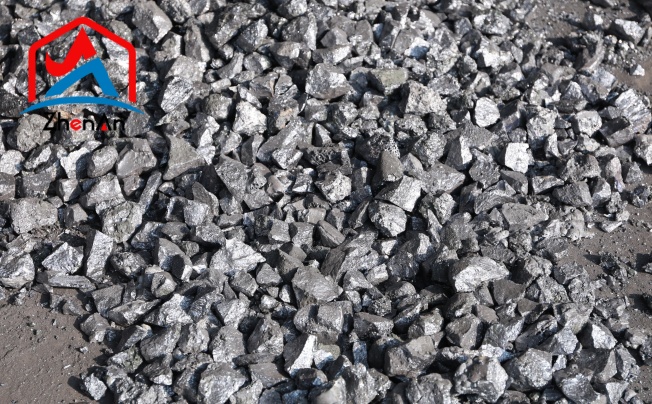1. Physical Properties
Aluminum
Aluminum, with an atomic number of 13 and a molar mass of 26.98 g/mol, is a silvery-white, lightweight metal known for its versatility and corrosion resistance. Its crystalline structure consists of close-packed face-centered cubic (FCC) unit cells, allowing for easy deformation under stress.
This structure contributes to its exceptional strength and malleability. In terms of density, aluminum possesses a relatively low value of about 2.7 g/cm³ at room temperature.
This characteristic makes it an ideal choice for applications where weight reduction is crucial without compromising structural integrity. Furthermore, aluminum exhibits a melting point of approximately 660 degrees Celsius, facilitating its processing through various fabrication techniques such as casting, extrusion, and machining.
The strength-to-weight ratio of aluminum is particularly notable in engineering applications. It offers an excellent balance between strength and weight efficiency, making it a preferred material in industries requiring high-performance components that are both durable and lightweight.
Magnesium features an atomic number of 12 and a molar mass of 24.31 g/mol, making it one of the lightest structural metals available. Its crystalline structure consists of hexagonal close-packed (HCP) unit cells which contribute to its unique properties such as exceptional stiffness and machinability.
With a density around 1.738 g/cm³ at room temperature, magnesium boasts remarkable lightweight characteristics that make it highly desirable for applications where weight reduction is critical without compromising mechanical performance. Additionally, magnesium has a relatively low melting point of approximately 650 degrees Celsius compared to other metals like aluminum or steel.
The strength-to-weight ratio of magnesium is impressive due to its lightweight nature coupled with decent tensile strength properties. This combination makes magnesium alloys suitable for applications requiring high specific strength while maintaining overall structural integrity.
2. Stress and Strain Resistance
When comparing the strain and stress resistance of magnesium and aluminum, it's miles essential to understand how each steel behaves beneath mechanical hundreds. Magnesium, recognized for its low density, gives a better electricity-to-weight ratio in comparison to aluminum. This feature is especially useful in programs wherein minimizing weight is important while maintaining power.
Aluminum, but, generally famous higher universal pressure resistance and is capable of withstand higher masses before deforming. It blessings from a blend of ductility and malleability, which allows it to take in electricity and undergo greater great deformation without failing. Aluminum's capability to withstand everlasting stress is appreciably advanced, making it a greater flexible desire in industries in which sturdiness is important.
Regardless of magnesium's marvelous energy-to-weight ratio, its stress resistance underneath excessive pressure conditions is decrease compared to aluminum. This distinction frequently dictates the selection between the 2 metals in engineering packages. As an instance, aluminum's exquisite pressure resistance makes it ultimate for high-pressure applications like aerospace components and automotive frames where safety and overall performance are paramount.
In summary, while magnesium offers an brilliant strength-to-weight ratio, aluminum outshines with greater strain and strain resistance, making it a extra appropriate preference for programs that demand excessive durability and reliability under mechanical stress.
3. Weight Differences and Applications in Industry
While thinking about aluminum and magnesium for numerous programs, one of the maximum significant elements to assess is the difference of their weight. Magnesium is notably lighter than aluminum, making it especially effective in industries where weight reduction is critical. For instance, the average density of aluminum is ready 2.7 g/cm³, while magnesium typically has a density of about 1.7 g/cm³. This sizeable distinction in density, nearly 1 g/cm³ lighter, is essential in sectors like car and aerospace engineering.
within the automobile enterprise, decreasing vehicle weight is directly correlated with progressed fuel efficiency and lower emissions. Therefore, magnesium alloys are increasingly hired in components which include transmission instances, seat frames, and a few engine elements. Regardless of its better cost, the load financial savings provided by magnesium can substantially beautify the financial and environmental overall performance of automobile fleets.
The aerospace enterprise similarly benefits from magnesium’s lightness, the use of this metallic in packages in which weight financial savings translate to higher gas performance and payload ability. For instance, magnesium is used within the construction of seats, luggage booths, and positive structural components inside aircraft. The lightness of magnesium no longer most effective helps fuel economic system but additionally improves the overall performance of aircraft operations.
4. Corrosion Resistance
Corrosion resistance is a essential factor in the choice of metals for diverse applications, especially in environments that can be harsh or corrosive. Inside the evaluation among aluminum and magnesium, each metal well-knownshows wonderful traits that affect their sturdiness and suitability for different makes use of.
Aluminum is famous for its corrosion resistance, which in general stems from its passivation layer. When uncovered to the environment, aluminum spontaneously paperwork a skinny, shielding oxide movie on its floor. This oxide layer is exceptionally powerful in protecting the underlying metal from further oxidation, in particular in atmospheric conditions. However, aluminum's corrosion resistance can be compromised in environments in which there may be high salinity or acidity, main to pitting and different styles of corrosion.
On the other hand, magnesium, whilst lighter than aluminum, typically has decrease corrosion resistance. Magnesium is distinctly reactive, and with out defensive coatings or treatments, it is susceptible to speedy oxidation and corrosion, especially in humid or saline environments. Advances in protecting treatments inclusive of anodizing, chromate conversion coatings, and using alloys have progressed its resistance to corrosion, but it typically stays much less strong than that of aluminum in similar conditions.
The enterprise regularly prefers aluminum for programs where toughness and minimal upkeep are vital due to its advanced corrosion resistance. In evaluation, magnesium might be selected for programs where weight loss is more vital than long-term durability against environmental elements. Therefore, the selection among aluminum and magnesium will depend notably on the particular environmental conditions and the overall performance requirements of the application.
5. Thermal Conductivity and Heat Resistance
Aluminum exhibits splendid thermal conductivity, which makes it a super preference for applications requiring green warmness dissipation, such as warmness sinks and cooling devices in electronics. Its capacity to quickly take in and dispel heat contributes to its extensive use in automotive and electronic industries. The thermal conductivity of aluminum is approximately 235 watts in step with meter-kelvin (W/m·ok).
In assessment, magnesium has a lower thermal conductivity in comparison to aluminum, with a value of approximately 156 W/m·ok. While it's far much less efficient in carrying out heat, this property can be an advantage in applications where warmness retention is vital. In spite of its lower thermal conductivity, magnesium's high warmth resistance permits it to perform nicely in excessive-temperature applications, preserving its structural integrity below thermal pressure.
Additionally, the warmth resistance of each metals is a vast issue in their performance under thermal pressure. Aluminum tends to lose some of its mechanical electricity at better temperatures, a hindrance for packages exposed to extended high temperatures. Alternatively, magnesium keeps a very good stage of power and stiffness even at elevated temperatures, that's useful for applications such as engine components and aerospace hardware where operational temperatures may be excessive.
Those differences in thermal residences need to be carefully taken into consideration throughout the cloth choice procedure, in particular in industries wherein thermal performance is vital. Each metals offer precise advantages relying on the precise requirements of the application, whether the need is for superior heat conduction or more desirable warmth resistance.






